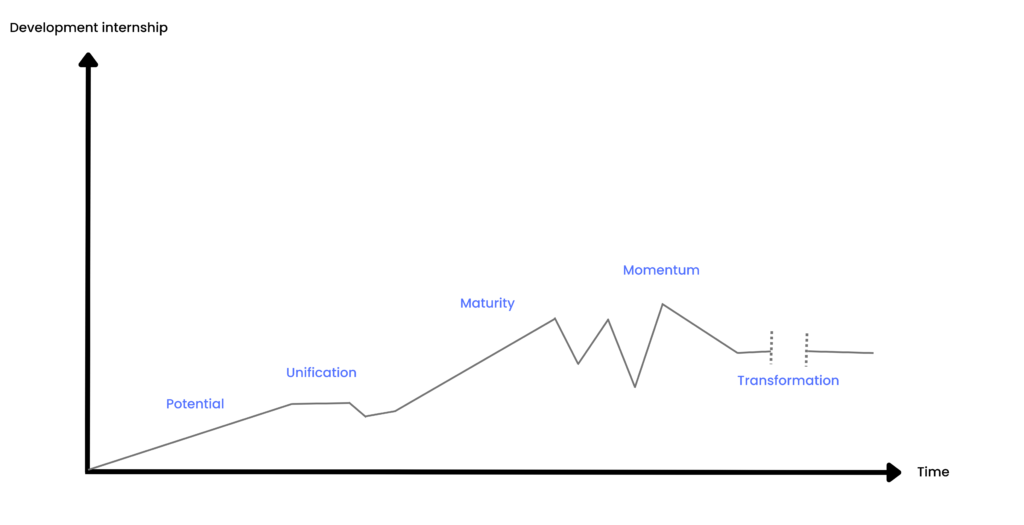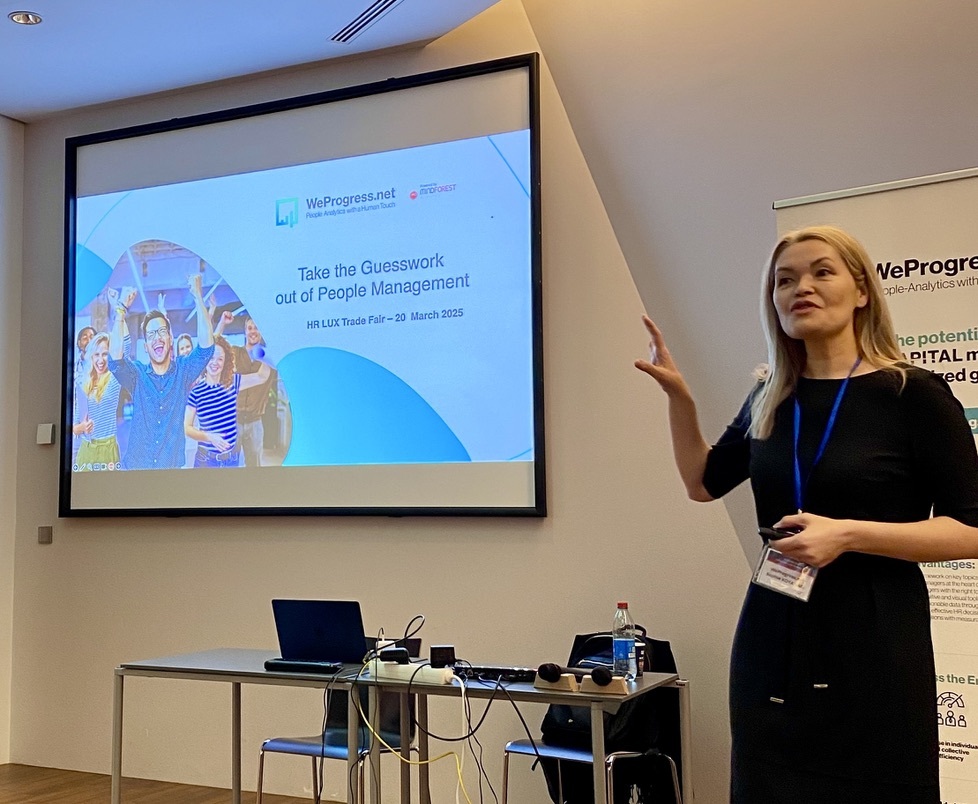How can communities of practice support and drive change?
Communities of practice are becoming increasingly common today and help to facilitate the management and sharing of knowledge within organisations. They promote learning in a social and collective logic by developing interactions and exchanges between professionals.
In the context of a change project, the main difficulties are linked to individuals (ADESI survey, 2004). [1] Thus, the human factor plays an important role which underlines the importance of involving individuals in a proactive way in order to unite them and encourage them to adhere to the change project. The community of practice therefore provides a means of mobilising people around the same subject and the same concerns in order to achieve the same objective.
The Community of Practice: definition and examples of issues addressed in a change context
A comprehensive definition has been given by Wenger, McDermott and Snyder (2002) [2], the main authors on the theory of communities of practice. They define them as groups of people who come together to share and learn from each other, either face to face or virtually. Members are held together by a common interest in a field of knowledge and are driven by a desire and need to share problems, experiences, models, tools and best practices. They extend their knowledge thanks to ongoing interaction and in the long term they develop a body of good practice.
These communities can emerge either spontaneously – without any input from the organisation – or intentionally. In the context of a change project, they are created voluntarily to unite people around the project and create spaces for exchange between individuals.
Topics | Questions dealt with by the community members |
Comunication & information | How can internal communication be improved? Which methods could be adopted to improve knowledge sharing? |
Leadership | Which best practices should managers use to keep employees engaged? In a change context, how can demotivated employees be re-engaged? |
Client experience | How can we understand our clients better and thus meet their expectations? Which concrete measures should we implement to help employees, who are in direct contact with clients, stay well informed and focused. |
Collaboration | How can we break down corporate silos? Which best practices should we apply to interact more effectively with other departments? |
Table 1: Examples of issues addressed by communities of practice in change projects
Experience shows that certain factors need to be in place to ensure the success of these communities.
Success factors when setting up a community of practice
- Identification of the issue/theme that must make sense to the employees. Indeed, if we want employees to participate in and commit themselves to the community, they must be able to find a common interest in sharing their experiences and ideas. This community must create value for themselves, their teams and the organisation. To identify these themes, the following questions can be asked: Is the theme broad enough to appeal to a large number of employees? Is it concrete and limited enough to achieve tangible results? Does it address real and current problems?
- The sponsor, who legitimises the community by providing high-level recognition within the organisation, ensuring its visibility, resources and strategic importance.
- The community manager who defines and supports the community’s mission and objectives in alignment with the organisation’s strategic direction and is also responsible for the integration of new members.
- The facilitator who is responsible for ensuring and nurturing member participation, initiating exchanges between members and maintaining momentum within the community.
- Members who belong to the community and participate in planned activities and events.
- Another key element for success is the support of senior management. Employees will only want to becomeinvolved if they feel that the feedback provided by the community will be accepted and promoted by senior This support will also be reflected in the provision of the necessary means and resources (time, human resources, IT tools, financial resources) to keep it alive.
- Finally, communication about the community provides a means of conveying best practices and of highlighting employee engagement. It will also encourage some employees to join the existing community or to create others on topics of strategic importance.
The development of a community, no matter whether voluntary or spontaneous, evolves through different stages. Wenger, Mc Dermott and Snyder (2002) [3] indicate that there are five stages in the life of a community.
The 5 stages of community evolution

- The potential stage: this is the moment when the need to bring people together around one or more themes/issues is perceived. At this stage, the recruitment process is launched and the community can only be created if the members feel the need to exchange and share.
- The unification stage: the community will grow, but for it to survive it will be necessary to build strong relationships between members, create a climate of trust and raise awareness of common interests. At this stage, members must see tangible benefits from participating in the community.
- The maturity stage: the community will pass through different cycles of activity with varying degrees of intensity. It is therefore important to clarify the purpose, role and boundaries of the community.
- The Momentum stage: at this level of the evolution process, it is necessary to maintain the dynamism of the community and to sustain the rhythm of the meetings between the members.
- The Transformation stage: the sense of community can be challenged by the emergence of new ideas. Other events can also curtail the momemtum established within the community (e.g. a new project, a new governance structure…).
In our context, communities are mobilised to support and drive change projects. They allow for a high level of employee involvement in the definition and implementation of improvement actions. Communities play a driving role in problem solving and experience sharing to transform the organisation by learning from its best practices. [4]
Our experience has shown that communities of practice can constitute a powerful vector of change when there is real expertise to set them up and to support them in their structuring and evolution.
Consultant in Change Management @ MindForest Group
Claire Navarra
[1] ADESI (2005) (Aide à la Décision pour l’Evolution Socio-Technique des Systèmes Industriels)
Thématique Pluridisciplinaire 47 du CNRS. Rapport de fin d’étude Action Spécifique 64 – ADESI.
[2] FONTAINE, M. (2001). « Keeping Communities of Practice Afloat », Knowledge Management Review, vol. 4, sept.-oct., p. 16-21.
[3] LAVE, J., et E. WENGER (1991). Situated Learning : Legitimate Peripheral Participation, Cambridge, MA, Cambridge University Press, 138 p.
[4] WENGER, E., R. MCDERMOTT et W.M. SNYDER (2002). Cultivating Communities of Practice :
a Guide to Managing Knowledge, Boston, MA, Harvard Business School Press, 284 p.
WANT TO RECEIVE OUR LATEST THOUGHT LEADERSHIP CONTENT?
Related posts
 Take the Guesswork out of People Management
Take the Guesswork out of People Management
 From processes to people: achieving quality
From processes to people: achieving quality
 Daring to lead Positive Transformation: What if Positive Emotional Capital was your key to sustainable change?
Daring to lead Positive Transformation: What if Positive Emotional Capital was your key to sustainable change?
 Why hire Change management professionals? We can do it alone!
Why hire Change management professionals? We can do it alone!
 Digital Transformation and Change Management: Lessons shared in an event hosted by Cebi and MindForest
Digital Transformation and Change Management: Lessons shared in an event hosted by Cebi and MindForest



